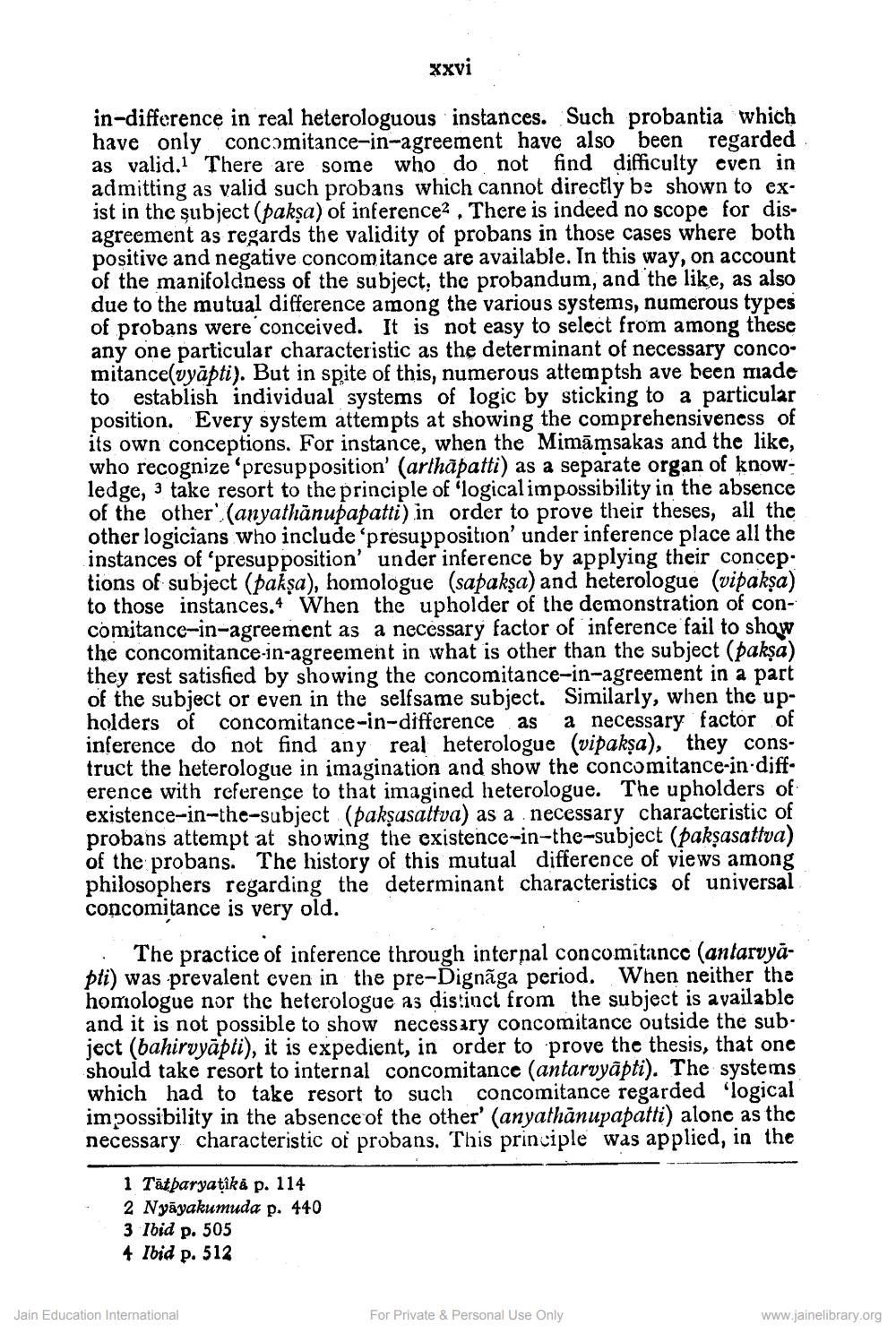________________
xxvi
in-difference in real heterologuous instances. Such probantia which have only concomitance-in-agreement have also been regarded as valid.1 There are some who do not find difficulty even in admitting as valid such probans which cannot directly be shown to exist in the subject (paksa) of inference. There is indeed no scope for disagreement as regards the validity of probans in those cases where both positive and negative concomitance are available. In this way, on account of the manifoldness of the subject, the probandum, and the like, as also due to the mutual difference among the various systems, numerous types of probans were conceived. It is not easy to select from among these any one particular characteristic as the determinant of necessary concomitance(vyāpti). But in spite of this, numerous attemptsh ave been made to establish individual systems of logic by sticking to a particular position. Every system attempts at showing the comprehensiveness of its own conceptions. For instance, when the Mimāmsakas and the like, who recognize 'presupposition' (arthāpatti) as a separate organ of knowledge, 3 take resort to the principle of 'logicalimpossibility in the absence of the other' (anyathānupapatti) in order to prove their theses, all the other logicians who include 'presupposition' under inference place all the instances of 'presupposition' under inference by applying their concep. tions of subject (pakşa), homologue (sapakşa) and heterologue (vipaksa) to those instances. When the upholder of the demonstration of concomitance-in-agreement as a necessary factor of inference fail to show the concomitance-in-agreement in what is other than the subject (paksa) they rest satisfied by showing the concomitance-in-agreement in a part of the subject or even in the selfsame subject. Similarly, when the upholders of concomitance-in-difference as a necessary factor of inference do not find any real heterologue (vipakşa), they construct the heterologue in imagination and show the concomitance-in difference with reference to that imagined heterologue. The upholders of existence-in-the-subject (paksasattva) as a necessary characteristic of probans attempt at showing the existence-in-the-subject (paksasattva) of the probans. The history of this mutual difference of views among philosophers regarding the determinant characteristics of universal concomitance is very old.
· The practice of inference through internal concomitance (antarvyāpti) was prevalent even in the pre-Dignāga period. When neither the homologue nor the heterologue as distinct from the subject is available and it is not possible to show necessary concomitance outside the subject (bahirvyāpii), it is expedient, in order to prove the thesis, that one should take resort to internal concomitance (antarvyāpti). The systems which had to take resort to such concomitance regarded 'logical impossibility in the absence of the other' (anyathānupapatti) alone as the necessary characteristic of probans. This principle was applied, in the
1 Tātparyaţikå p. 114 2 Nyāyakumuda p. 440 3 Ibid p. 505 4 Ibid p. 512
Jain Education International
For Private & Personal Use Only
www.jainelibrary.org




